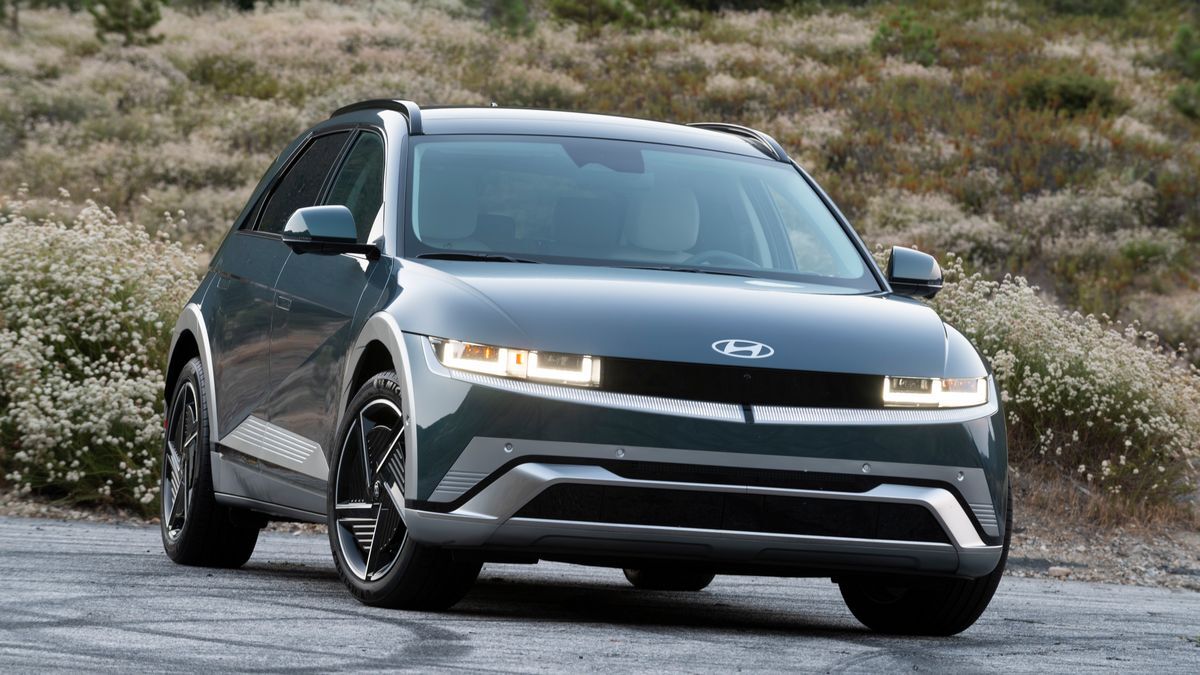- Nissan today unveiled the 2026 Rogue Plug-In Hybrid (PHEV), which is almost entirely identical to the Mitsubishi Outlander PHEV
- That’s not an entirely bad idea, though the Mitsubishi version comes with a longer warranty
When Nissan announced in 2024 that it was working on a plug-in hybrid (PHEV) version of its bestseller, the Rogue SUV, we knew the vehicle was likely to borrow some technology from the Mitsubishi Outlander PHEV. But we had no idea. None.
It’s like copying another student’s homework right down to putting their name at the top of the page.
Nissan today revealed the 2026 Rogue PHEV. It’s an Outlander Hybrid with a Nissan badge on it.
Well, it has changed the shape of the grille slightly, and inside, fitted sill plates that read “Rogue” and used a slightly different quilting pattern on the leather seats of high-end trims. But that appears to be the entire list of changes.
Nissan can do this because both companies are part of the Renault-Nissan-Mitsubishi Alliance, sharing part ownership.
The Rogue PHEV might still make a good buy for some drivers.
Badge Engineering, and Why it Might Be OK This Time
- There’s a derogatory auto industry term for this — “badge engineering”
- It’s mocked, but it has its pros
There’s an old auto industry term for this sort of move. It’s called “badge engineering.” At its worst, it leaves an automaker competing with itself as dealers compete to sell two or three largely identical models by marking down prices in a race to the least profit.
It’s part of what took General Motors from eight brands to four in the early Obama years. It’s why you don’t see new Mercury vehicles anymore.
But, in this case, it could have its virtues.
The Outlander PHEV is a surprisingly solid vehicle. It can travel up to 38 miles on electric power alone before using any gasoline. It has a small third row of seats, not large enough for everyday use, but useful in a pinch. And its cabin feels a bit more upscale than its price range.
The best reason not to buy one is that Mitsubishi has a tiny dealer network in the U.S. It can be hard to find parts and service if you can’t guarantee you’ll live near the dealership you bought from for the entire time you’ll own the car.
Buying a Nissan version instead would give you access to Nissan’s far more extensive service network.
There’s likely a drawback, too, however.
The best reason to buy an Outlander PHEV is its warranty. Mitsubishi protects it with a 10-year/100,000-mile powertrain warranty. Nissan dealers offer only a five-year/60,000-mile plan.
Nissan hasn’t revealed pricing.
About the Rogue PHEV
- 248 horsepower, 38 miles of all-electric range, and standard all-wheel drive
When Mitsubishi engineers designed the current Outlander and Outlander PHEV, they used the same platform from which Nissan builds the Rogue. So the cars already share a chassis.
The Rogue PHEV uses Mitsubishi’s 2.4-liter 4-cylinder engine mated to two electric motors, one per axle. That gives it 248 horsepower — more than enough in the competitive compact SUV segment — and all-wheel drive (AWD) grip. Like the Outlander PHEV, it gets up to 38 miles on electricity alone. It can recharge using Level 2 public chargers, but not Level 3 fast chargers.
Standard equipment includes wireless Apple CarPlay and Android Auto, each running through a 9-inch touchscreen.
That small third row returns, making seating for five in day-to-day use and seven sometimes, if two of them are small.
Nissan says the Rogue PHEV comes with its ProPilot Assist 1.12 system, but that is not the more advanced ProPilot found on most current Nissan models. This appears to be a simple renaming of the adaptive cruise control and lane centering systems Mitsubishi offers.








